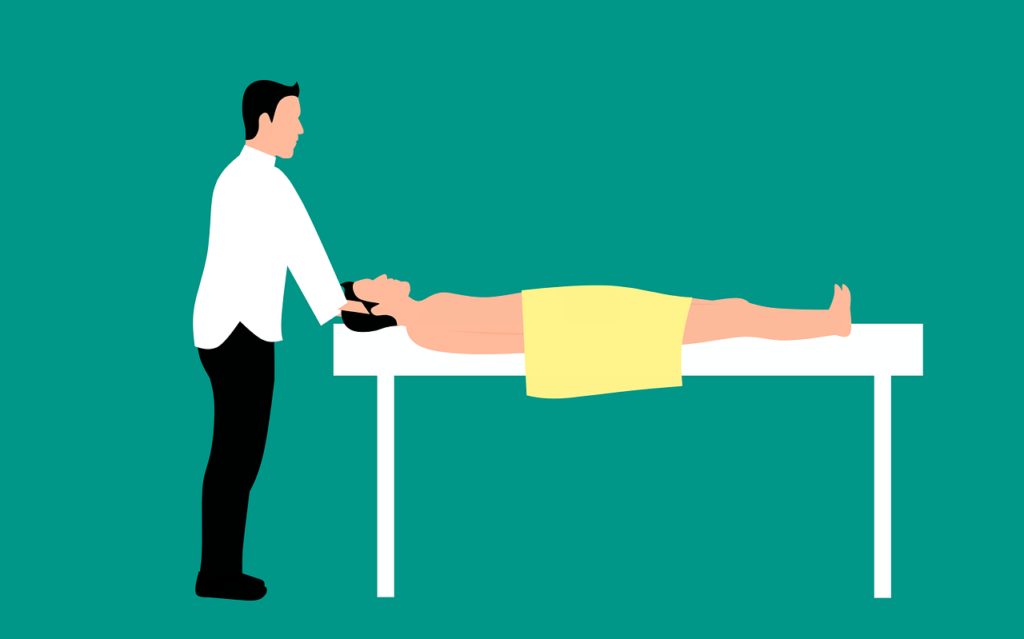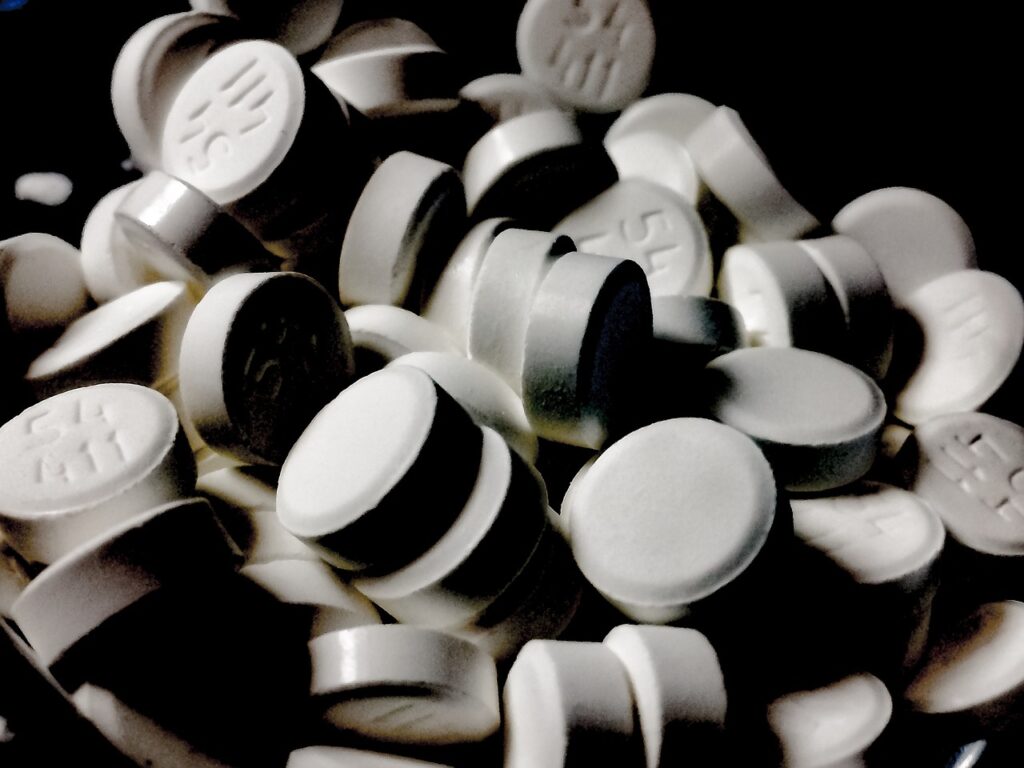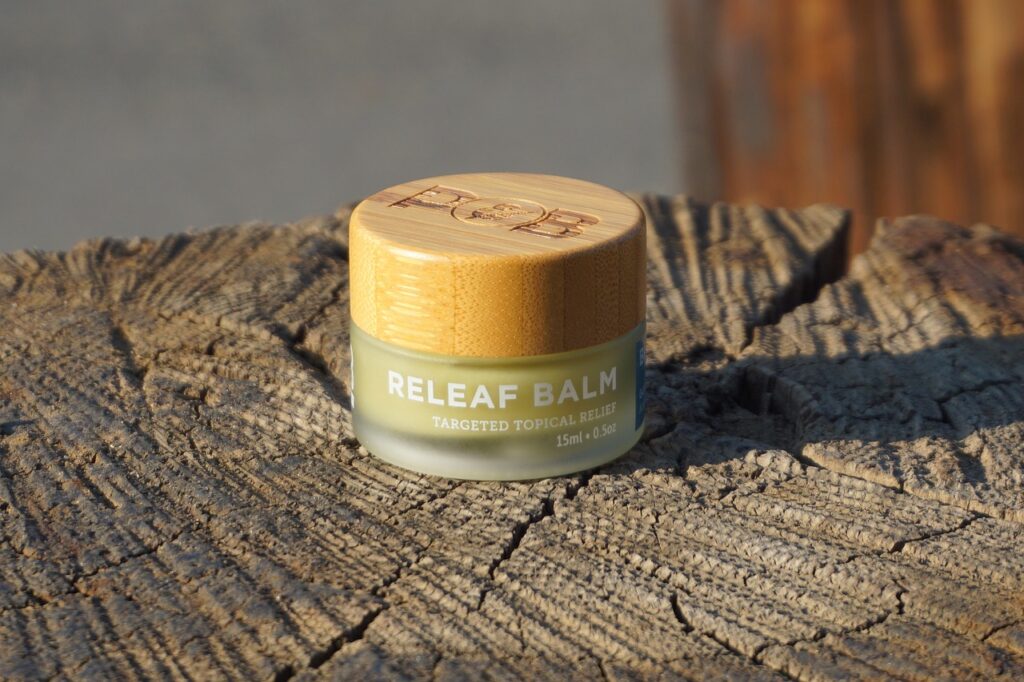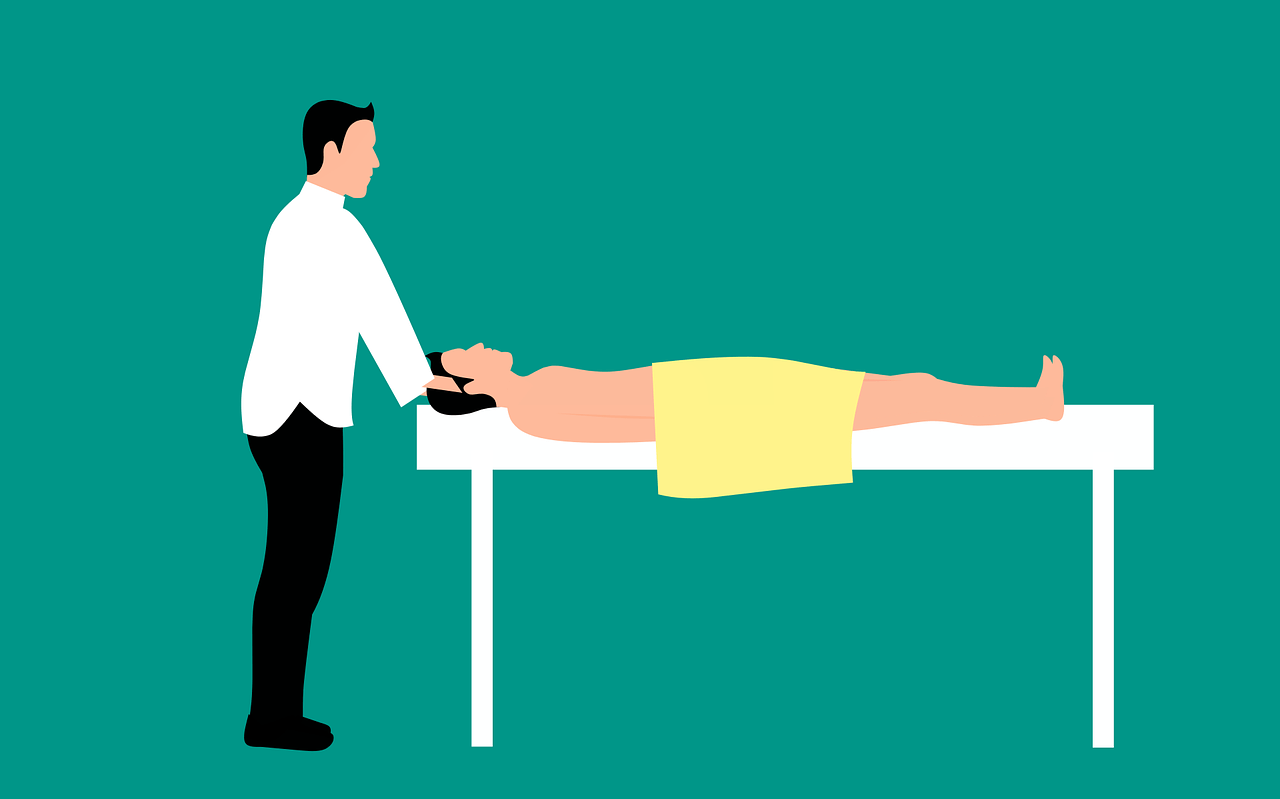Are you tired of relying on medication to relieve your chronic pain? Look no further, because we have the perfect solution for you: heat therapy. In this article, we will guide you on how to harness the power of heat to naturally alleviate your pain. From hot baths and heating pads to warm compresses and heat wraps, we will explore various methods that you can easily incorporate into your daily routine. So say goodbye to those nagging aches and pains and embrace the warmth and comfort of heat therapy. Trust us, your body will thank you.

Understanding Heat Therapy
Heat therapy is a popular and effective method for relieving pain and promoting relaxation. It involves the application of heat to the body, which can help alleviate muscle soreness, joint pain, menstrual cramps, headaches, and even injuries and sprains. By understanding how heat therapy works and its numerous benefits, you can make an informed decision about incorporating it into your pain management routine.
What is heat therapy?
Heat therapy, also known as thermotherapy, is the practice of using heat to provide relief from pain and discomfort. It can be applied to specific areas of the body or used as a whole-body treatment. The main goal of heat therapy is to increase blood flow to the targeted area, relax tight muscles, and reduce inflammation. This can result in pain relief, improved mobility, and a sense of overall relaxation.
How does heat therapy work?
When heat is applied to the body, it causes the blood vessels in the area to dilate, which increases blood flow. This improved circulation helps to deliver oxygen and nutrients to the tissues, while also removing waste products. Heat also stimulates the sensory receptors in the skin, which can decrease the transmission of pain signals to the brain. Additionally, heat therapy promotes muscle relaxation, which can ease muscle tension and tightness.
Benefits of heat therapy
There are numerous benefits to incorporating heat therapy into your pain management routine. Some of the key advantages include:
-
Pain relief: Heat therapy can help relieve both acute and chronic pain by promoting relaxation, improving blood flow, and reducing muscle tension.
-
Increased flexibility: By relaxing muscles and reducing stiffness, heat therapy can improve joint mobility and flexibility.
-
Faster healing: Heat therapy increases blood flow to the targeted area, which can enhance the body’s natural healing processes and accelerate tissue repair.
-
Stress reduction: The warmth and relaxation provided by heat therapy can have a calming effect on the body and mind, reducing stress and promoting a sense of well-being.
-
Non-invasive and drug-free: Heat therapy is a natural pain relief method that does not require medications or invasive procedures, making it a safe and accessible option for many people.
Different Methods of Applying Heat Therapy
Heat therapy can be applied using a variety of methods, each with its own unique advantages. By understanding the various options available, you can choose the one that best suits your needs.
Hot water bottles
Hot water bottles are a classic and versatile option for applying heat therapy. They are easy to use and can provide long-lasting heat. Simply fill the bottle with hot water, secure the cap tightly, and place it on the desired area of the body. Hot water bottles are especially useful for larger treatment areas or when you need to stay in one position for an extended period.
Heating pads
Heating pads are an electric option that offers consistent and adjustable heat. They typically come in rectangular or contour shapes, with some even designed specifically for certain body parts. Heating pads can be easily plugged into an electrical outlet and have adjustable settings to control the level of heat. They are ideal for targeted heat therapy and can be used in various positions.
Warm towels
Warm towels are a simple and accessible way to apply heat therapy. They can be heated by soaking them in hot water or using a microwave. Once heated, simply wring out any excess water and place the warm towel on the desired area. Warm towels are particularly beneficial for relieving muscle soreness, joint pain, and menstrual cramps.
Heat wraps
Heat wraps are convenient and portable options for heat therapy. They are typically made from soft and flexible materials, allowing them to conform to different body shapes and sizes. Heat wraps often contain heat-retaining ingredients such as iron powder, charcoal, or herbs. These ingredients can be activated by bending the wrap, releasing heat for several hours. Heat wraps are ideal for on-the-go pain relief and can be easily worn under clothing.
Heat patches
Heat patches are adhesive patches that provide localized heat therapy. They are compact, discreet, and convenient to use. Heat patches contain chemicals that generate heat through an exothermic reaction when exposed to air. Once applied to the skin, the heat is gradually released, providing targeted pain relief. Heat patches are perfect for treating small areas and can be worn for several hours.
Hot showers or baths
Hot showers or baths can be a soothing and enjoyable way to incorporate heat therapy into your routine. The warm water helps to increase blood flow, relax muscles, and relieve tension throughout the body. To enhance the therapeutic effects, you can also add essential oils, Epsom salts, or bath bombs to the water. Hot showers or baths are particularly beneficial for overall relaxation and relieving full-body muscle soreness.

Choosing the Right Heat Source
When selecting a heat source for therapy, it is important to consider factors such as convenience, safety, and effectiveness. By choosing the right heat source, you can maximize the benefits of heat therapy while ensuring your comfort and well-being.
Electric vs. microwaveable heat sources
Electric heat sources, such as heating pads, offer consistent and adjustable heat levels. They are powered by electricity, which allows for precise temperature control and longer heat duration. Electric heat sources are suitable for long-term use and are ideal for targeted pain relief. On the other hand, microwaveable heat sources, such as warm towels and heat wraps, provide convenience and portability. They can be quickly heated in a microwave and are perfect for on-the-go pain relief.
Size and shape considerations
When choosing a heat source, consider the size and shape of the area you wish to treat. Large heating pads or hot water bottles are more suitable for broader areas, such as the back or abdomen. Smaller heat sources, such as heat patches or warm towels, are better suited for specific joints or muscles. Make sure to select a size and shape that can effectively cover the treatment area and provide adequate heat distribution.
Safety features to look for
It is crucial to prioritize safety when using heat therapy. Look for heat sources with built-in safety features such as auto shut-off timers or temperature controls. These features can prevent overheating and reduce the risk of burns or skin damage. Additionally, ensure that the heat source is durable and made from high-quality materials to minimize the risk of leaks or malfunctions.
Preparing for Heat Therapy
Proper preparation is essential to ensure a safe and effective heat therapy session. By taking the necessary steps before starting heat therapy, you can optimize the benefits and minimize any risks.
Consulting with a healthcare professional
Before incorporating heat therapy into your pain management routine, it is advisable to consult with a healthcare professional. They can assess your specific condition, provide guidance on the appropriate heat level and duration, and address any concerns or contraindications.
Checking for contraindications
Certain conditions may limit or contraindicate the use of heat therapy. These can include open wounds, areas of swelling or inflammation, skin infections, and certain skin conditions such as dermatitis or psoriasis. It is important to check with your healthcare professional and read the product instructions carefully to ensure that heat therapy is safe for you.
Selecting the appropriate heat level
Different types of pain and conditions may require varying levels of heat. It is essential to choose an appropriate heat level to avoid burns or discomfort. Start with a lower heat setting and gradually increase it until you reach a comfortable level. If at any point the heat becomes too intense or causes pain, immediately lower the temperature or discontinue use.
Clearing the treatment area
Before applying heat therapy, ensure that the treatment area is clean, dry, and free from any oils, lotions, or creams. These substances can interfere with heat absorption and reduce the therapy’s effectiveness. If necessary, gently cleanse the area with mild soap and water, then pat dry before proceeding with heat therapy.
Gathering necessary supplies
Prepare all the supplies you will need for your heat therapy session in advance. This includes the chosen heat source, any additional accessories or coverings, and a timer or clock to keep track of the treatment duration. Having everything readily available will allow for a smooth and uninterrupted therapy session.

Using Heat Therapy for Specific Types of Pain
Heat therapy can be utilized to relieve a wide range of pain and discomfort. By understanding how to apply heat therapy to specific types of pain, you can effectively target and alleviate your symptoms.
Muscle soreness and tension
Heat therapy is highly effective in treating muscle soreness and tension. Apply a heating pad, warm towel, or heat wrap to the affected muscles for approximately 15-20 minutes. The heat will help relax the muscles, increase blood flow, and promote faster recovery.
Joint pain and stiffness
For joint pain and stiffness, heat therapy is beneficial for improving mobility and reducing discomfort. Use a heating pad or hot water bottle on the affected joint for around 15-20 minutes. The heat will help increase blood circulation, reduce stiffness, and relieve pain.
Menstrual cramps
Heat therapy can provide significant relief for menstrual cramps. Place a heating pad or hot water bottle on your lower abdomen or lower back, depending on where you experience cramps. Apply heat for 15-20 minutes at a time to help relax the uterine muscles and alleviate pain.
Headaches and migraines
Heat therapy can be an effective complementary treatment for headaches and migraines. Apply a warm towel or heat wrap to the back of the neck or forehead for approximately 15-20 minutes. The heat will help relax tense muscles, improve circulation, and provide soothing relief.
Injuries and sprains
Heat therapy can aid in the recovery of injuries and sprains once the acute inflammation has subsided. Apply a heating pad or warm towel to the affected area for 15-20 minutes, several times a day. The heat promotes blood flow, reduces muscle spasms, and helps accelerate healing.
Applying Heat Therapy Safely
While heat therapy can be highly beneficial, it is essential to apply it safely to avoid any adverse effects. By following these safety guidelines, you can ensure a safe and effective heat therapy session.
Avoiding excessive heat
Do not exceed the recommended heat level or duration to avoid burns or skin damage. If the heat becomes uncomfortable or causes pain, immediately discontinue use. It is better to start with a lower temperature and gradually increase it if necessary.
Using protective barriers
To protect your skin from direct heat exposure, always use a protective barrier between your skin and the heat source. This can include a towel, cloth cover, or heat-proof fabric sleeve. Ensure that the barrier allows heat penetration while preventing direct contact with the skin.
Applying heat intermittently
It is important to give your skin and body breaks between heat therapy sessions. Avoid using heat for extended periods without interruptions, as this can increase the risk of burns or overheating. Take regular breaks to allow your skin to cool down before reapplying heat.
Monitoring skin for signs of damage
Regularly check your skin during and after heat therapy for any signs of damage or irritation. Look for redness, blistering, or changes in skin color or texture. If you notice any adverse reactions, immediately stop the heat therapy and seek medical attention if necessary.
Knowing when to seek medical help
While heat therapy is generally safe, it is essential to recognize when to seek medical help. If your pain worsens, if you experience swelling or other abnormal symptoms, or if you have any concerns regarding your condition, consult with a healthcare professional for appropriate diagnosis and treatment.
Enhancing Heat Therapy with Other Techniques
Heat therapy can be combined with other techniques to further enhance its effectiveness for pain relief. By incorporating these complementary approaches, you can maximize the benefits of heat therapy.
Combining heat with massage
Pairing heat therapy with massage can provide a powerful combination for pain relief and relaxation. Massage helps further relax muscles, improve circulation, and reduce tension, while heat therapy helps warm and loosen the muscles beforehand. Consider incorporating self-massage techniques, using massage tools, or seeking professional massage therapy along with heat therapy.
Stretching exercises
Performing gentle stretching exercises after applying heat therapy can help maintain flexibility and prevent muscle tightness. The heat from therapy helps warm up the muscles, making them more pliable and receptive to stretching. Consult with a healthcare professional or physical therapist for appropriate stretches based on your specific condition.
Using topical pain relievers
When experiencing localized pain, combining heat therapy with topical pain relievers can provide targeted relief. Apply a pain-relieving cream, gel, or patch to the affected area before applying heat therapy. The heat enhances the absorption and effectiveness of the pain reliever, maximizing the pain relief benefits.
Trying complementary therapies
For enhanced pain relief, consider trying other complementary therapies alongside heat therapy. These can include acupuncture, acupressure, aromatherapy, or herbal treatments. Consult with a healthcare professional or certified practitioner to determine which complementary therapies are appropriate for your specific condition.
Managing stress and relaxation techniques
Stress and tension can exacerbate pain and discomfort. Incorporating stress management and relaxation techniques along with heat therapy can promote overall well-being and pain relief. Practicing deep breathing exercises, meditation, mindfulness, or engaging in activities that promote relaxation can enhance the effectiveness of heat therapy.
Duration and Frequency of Heat Therapy
The duration and frequency of heat therapy sessions will vary depending on the specific condition and individual needs. By following these general guidelines, you can ensure that you are utilizing heat therapy in a safe and effective manner.
Recommended duration for different conditions
For muscle soreness, joint pain, and menstrual cramps, heat therapy sessions typically last around 15-20 minutes. This duration allows enough time for the heat to penetrate the tissues and provide relief. However, for chronic conditions or more severe pain, longer sessions may be beneficial. Consult with a healthcare professional for specific recommendations based on your condition.
Frequency of heat therapy sessions
To achieve optimal results, heat therapy should be used regularly. For acute pain or immediate relief, you can apply heat therapy several times a day. However, if you are using heat therapy as part of a long-term pain management plan, aim for at least two to three sessions per day, with breaks in between. Again, consult with a healthcare professional for guidance on the recommended frequency.
Taking breaks between treatments
Allowing your body adequate rest between heat therapy sessions is crucial to prevent overheating or skin damage. A general recommendation is to take a break of at least one hour between treatments, especially if you are using higher heat levels or experiencing prolonged sessions. During the break, allow your skin to cool down and return to its normal temperature before applying heat again.
Precautions and Contraindications
While heat therapy is generally safe and well-tolerated, there are certain situations in which it should be avoided or used with caution. It is important to be aware of these precautions and contraindications to ensure that you are utilizing heat therapy appropriately.
When not to use heat therapy
Avoid using heat therapy in the following situations:
- Immediately after an injury, as this can increase inflammation and swelling.
- Over an open wound or broken skin.
- On areas of the body with reduced sensation, such as numb or tingling areas.
- Over areas with compromised circulation or blood flow, such as varicose veins or deep vein thrombosis.
Avoiding heat therapy for certain conditions
Heat therapy may not be suitable for individuals with certain conditions, including:
- Diabetes: Heat therapy can potentially cause burns or skin damage in individuals with reduced sensation or impaired circulation.
- Cardiovascular conditions: Heat therapy may increase heart rate and blood pressure, making it unsuitable for individuals with high blood pressure or heart disease.
- Pregnancy: It is advisable to consult with a healthcare professional before using heat therapy during pregnancy, as it may affect fetal development.
Consulting a healthcare professional if uncertain
If you have any uncertainties or concerns regarding the safety or appropriateness of heat therapy for your specific condition, it is always best to consult with a healthcare professional. They can provide personalized advice and guidance based on your medical history and current health status.
Other Considerations and Tips
In addition to the information provided above, there are a few additional considerations and tips to keep in mind when utilizing heat therapy for pain relief.
Using heat therapy as part of an overall pain management plan
Heat therapy is most effective when used as part of a comprehensive pain management plan. Incorporate other strategies such as exercise, stretching, rest, proper nutrition, and stress management techniques for optimal results. Consult with a healthcare professional to create an individualized plan that addresses your specific needs.
Adjusting heat therapy based on individual preferences
Everyone’s tolerance for heat can vary, so it is essential to find a temperature and duration that are comfortable for you. Experiment with different heat levels and session durations to determine what works best for your pain relief and comfort. Remember to prioritize your safety and avoid excessive heat exposure.
Storing and caring for heat therapy products
Proper storage and care of your heat therapy products will help prolong their lifespan and ensure they remain hygienic and safe to use. Follow the manufacturer’s instructions for specific care recommendations, such as cleaning reusable heat sources, checking for any signs of wear or damage, and storing them in a dry and clean environment.
In conclusion, heat therapy is a valuable and accessible method for natural pain relief. By understanding the principles behind heat therapy, exploring the various methods of application, and adopting the recommended precautions and tips, you can effectively incorporate this therapy into your pain management routine. Always consult with a healthcare professional for personalized advice and guidance to ensure that heat therapy is safe and appropriate for your specific needs.
